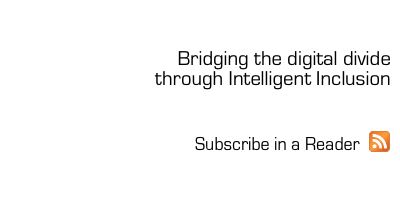
As I mentioned before, almost two-thirds of the global population is not yet using the Internet. Despite several digital inclusion efforts, penetration has not reached over 90% in the majority of the countries in the world. Looking at the reasons why a person is not connected to the Internet yet, we see some interesting trends.
The first one, high cost of connectivity, is mistakenly taken as the single one responsible for the digital divide. It is one of the most important barriers, of course, but not the main one for a large percentage of the population. Assuming that is to ignore the underlying behavioral components that affect our decisions. In his book, The Social Animal, David Brooks demonstrates the complexity involved in decision-making, and how that is particular to anyone. Rationalizing in financial terms only is a mistake, as it is just a small piece of the puzzle. One example will help to clarify the discussion: the purchase of expensive aspirational items. Here in Brazil clothing is ridiculously expensive, twice as expensive as in the USA in the best cases. But, walking on the streets, you will frequently find low-income kids wearing them as a status symbol. They know that the only way that they can afford them is through personal sacrifice: skipping lunch to save the money, walking instead of taking the bus, and purchasing them in a large number of installments. But they do, and they are proud of it.
The second trend is the misconception that every teenager is a technology lover. Every family has a wiz kid, the one that fixes all computers, installs software, and make everything work. But they usually have brothers and sisters that just want to use technology, without thinking about it. Their brothers want to play soccer, music and have fun; the sisters love shopping and hanging out with friends. In the 80’s the split was much more visible and deep. The only gadget that attracted a wider audience was the videogame; computers were only used by geeks. Things began to change in the early 2000’s with the widespread adoption of mobile phones, but the major disruptor was the appearance of the social networks, along with the smartphones. It did not change the underlying trend of loving or not technology, but served as a connectivity tool. Coolness became a decision factor in the adoption of a mobile phone, in many cases overcoming technological capabilities. I am still amazed at the number of teens that have blackberries only to use BBM and chat with friends. Technology is no longer the realm of the geeks, but a different form to interact with friends and family. Sharing is the new way of belonging to a group, and smartphones are perfect for this.
Older users tend to be even more reluctant in technology adoption. Before Windows Vista, it was really hard for them to use a computer. The user interface was not intuitive, software was complex and required a steep learning curve. Macs were always easier to use, but the market share is small when compared to Windows. I witnessed this with my parents and my in-laws; it took them a long time to go online. Now they are not really confortable with technology, but enough to go on social media, email, browsing and using basic functionality.
Digital inclusion is not only providing cheap access. It is also making an effort to understand why people are not connected yet, and finding ways to overcome the barriers. There are many solutions to this problem, from training people to giving them compelling reasons to connect, from simplifying user interfaces to adapting content to handle large and small screens, and many more.
And you, what do you think?
Cheers,
Caetano Notari
Recommended Reading:
What is the status of global digital inclusion – global data showing the current numbers on digital inclusion
Why is digital inclusion essential? – quick analysis in the importance of digital inclusion


{ 0 comments… add one now }
You must log in to post a comment.